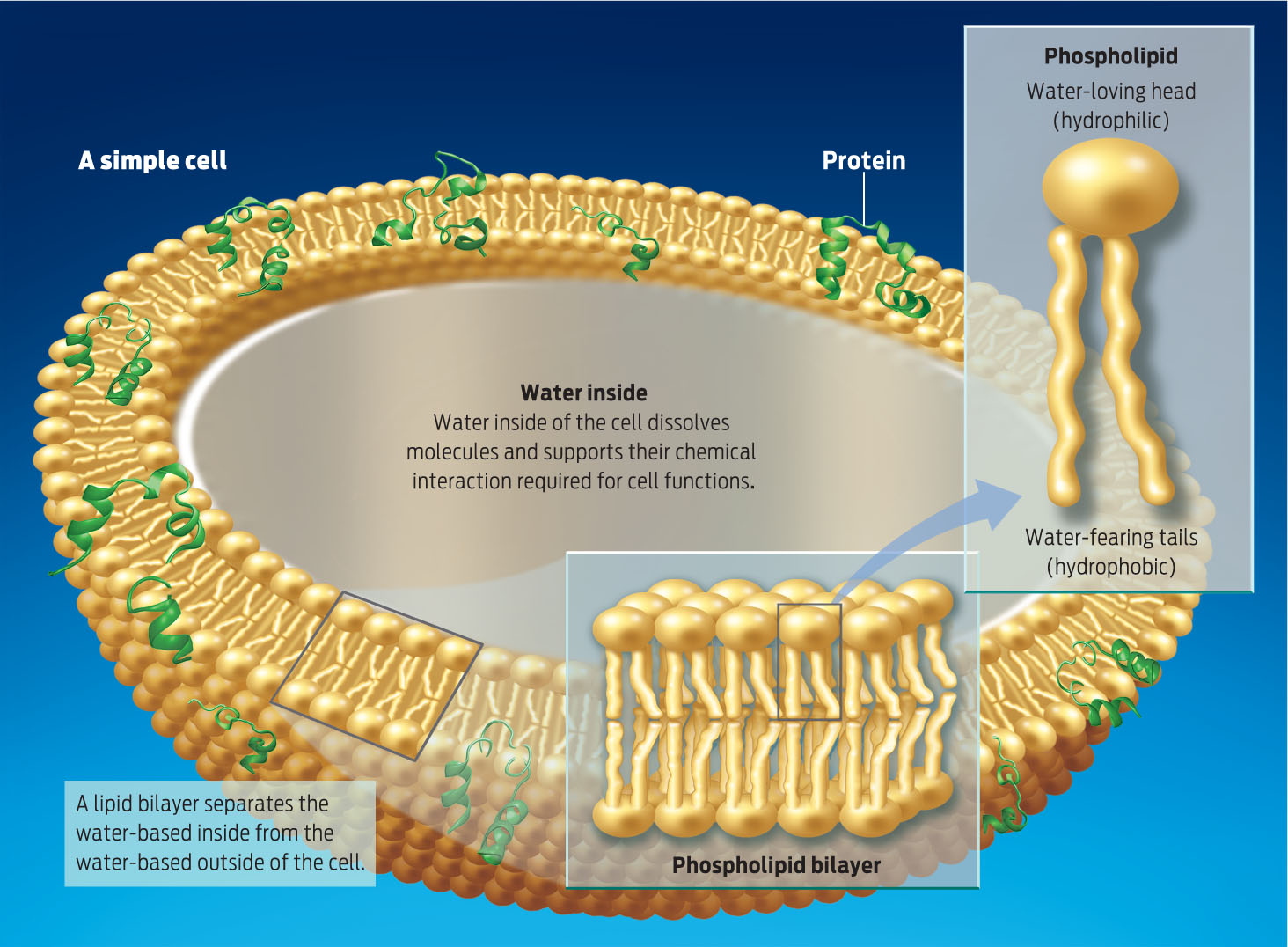“MY FAVORITE EARTHLINGS”
When not helping to send rovers into space, McKay spends his time researching more terrestrial habitats–including ones nearly as foreboding as Mars, such as Chile’s Atacama Desert and the Dry Valleys of Antarctica. Deserts are intriguing to him, he says, because they are good analogs of Mars: they allow scientists to ask questions about the Martian environment without actually traveling there.
McKay’s office is full of rock souvenirs from deserts all over world. Rocks are home to some of his favorite creatures–cyanobacteria–which he calls “my favorite earthlings.”
CELL The basic structural unit of living organisms.
Cyanobacteria form a layer of green beneath desert rocks, where they live on light and moisture that is trapped there as in a greenhouse. Cyanobacteria represent one of the few organisms that can survive in these extreme environments. In fact, cyanobacteria are some of the most ancient organisms on Earth, having first evolved some 2.5 billion years ago. Not only that, through photosynthesis (see Chapter 5) they filled the atmosphere with its first breaths of oxygen, making it habitable for the rest of life.
Not bad for an organism made up of only a single cell. Cells are the basic structural unit of life on Earth; they are what enclose life, giving it boundaries. Some organisms, like cyanobacteria, are made up of only a single cell; humans contain trillions of them.
All cells have the same basic structure: they are water-filled sacs bounded by a cell membrane The cell membrane is a two-ply layer of phospholipids in which proteins are embedded. Each phospholipid has one hydrophobic (“water-fearing”) end that repels water and a hydrophilic (“water-loving”) end that attracts it. What happens when a bunch of phospholipids are surrounded by water? They form a lipid sandwich: the hydrophobic tails cluster together, burying themselves in the middle of the membrane, as far away from water as possible, while the hydrophilic heads face out, toward the water (INFOGRAPHIC 2.5) .
Cells are the basic structural unit of life. They have a water-based interior that is separated from a chemically distinct water-based exterior by a cell membrane. The cell membrane is a lipid bilayer with embedded proteins.

CELL MEMBRANE A phospholipid bilayer with embedded proteins that forms the boundary of all cells.
PHOSPHOLIPID A type of lipid that forms the cell membrane.
HYDROPHOBIC “Water-fearing”; hydrophobic molecules will not dissolve in water.
HYDROPHILIC “Water-loving”; hydrophilic molecules dissolve in water.
33
No one knows whether or not cells exist on Mars, but researchers suspect that if life ever did evolve on Mars, it would have been microscopic and unicellular, since that is what the earliest life on Earth was like.
McKay knows of only one desert where it’s so dry that even cyanobacteria can’t survive, and that’s Atacama Desert in Chile. It is perhaps the most Mars-like of any place on Earth. In fact, as dry as Atacama is, Mars is drier.
It wasn’t always that way. Scientists believe Mars was likely a lot moister in its earlier days–3 or 4 billion years ago, when the planet still had an atmosphere to speak of.